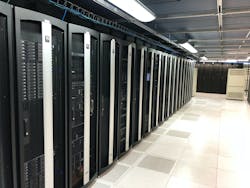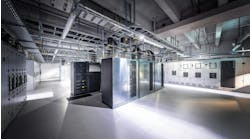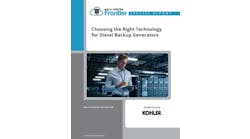Chatsworth Products’ John Thompson highlights how a California colocation achieved higher rack densities and ramped up efficiency by using new data center cooling strategies and technology.
John Thompson, Chatsworth Products
After significant growth, Xfernet, a Los Angeles-based colocation, needed to move its facility into a 14,000 square foot data center space with shallow raised floors, low ceilings and limited footprint for new cooling equipment.
With cabinets having to support more equipment for the growing list of clients, maintaining equipment within acceptable operational temperatures was becoming a struggle.
At its current 200 watts per square foot, the company needed to reduce the physical white space of the data center to achieve higher rack densities. The white space was then constrained to 10,000 square feet to enable double the rack density at 4-5 kW per cabinet (20 square feet per rack).
At those densities, adding more air conditioning to the room would not be a cost-effective option, particularly in the long term, according to Sam Scott, Xfernet’s CEO and project lead.
Scott needed to find a solution that would provide ideal airflow to cool each rack, even though the room had low drop ceiling and shallow raised floors, which limited the amount of airflow volume into the room.
The Best Cabinet Configuration in Retrofit Deployments
In searching for a solution, Scott learned about Chatsworth Products (CPI) and its technology in data center cooling. Passive Cooling completely segregates hot and cold air, and can be applied at the cabinet or aisle level, providing increased equipment cooling performance in all elements of the data center mechanical plant, thereby reducing overall energy costs.
In Xfernet’s case, cabinet-level CPI Passive Cooling was the ideal solution: by deploying cabinets with Vertical Exhaust Ducts, airflow can be effectively managed regardless of architectural constraints.
FIGURE 1: Vertical Exhaust Duct configuration is beneficial in retrofit deployments because it is the simplest and most cost-effective containment method to deploy and change. (Graphic: Chatsworth Products)
As Figure 1 shows, the patented Vertical Exhaust Ducts channel the hot exhaust air out of the cabinet and up into the drop ceiling, segregating the hot air out of the room, and ducting it back passively into the Computer Room Air Conditioner (CRAC) units. The cooled air from the CRAC units is then redistributed under the floor, into the room and through the racks. This cools the equipment without the need to overprovision the room, drastically reducing cooling costs.
Results
Xfernet was able to double rack densities and reduce its power usage effectiveness (PUE) rating from almost 2.0 to 1.47, mainly because of the efficiencies from CPI Passive Cooling, according to Scott.
“We saw the improvement immediately once we implemented the cabinets. It allowed us to fully service our clients. Clients pay per footprint of the cabinet space. When the limitation is compute power and ability to cool that power—if you can’t support that—they’ll look elsewhere,” Scott explains.
To learn more about how CPI helped Xfernet to increase rack densities without adding on cooling costs, read the complete case study.
John Thompson is a Field Application Engineer at Chatsworth Products.





